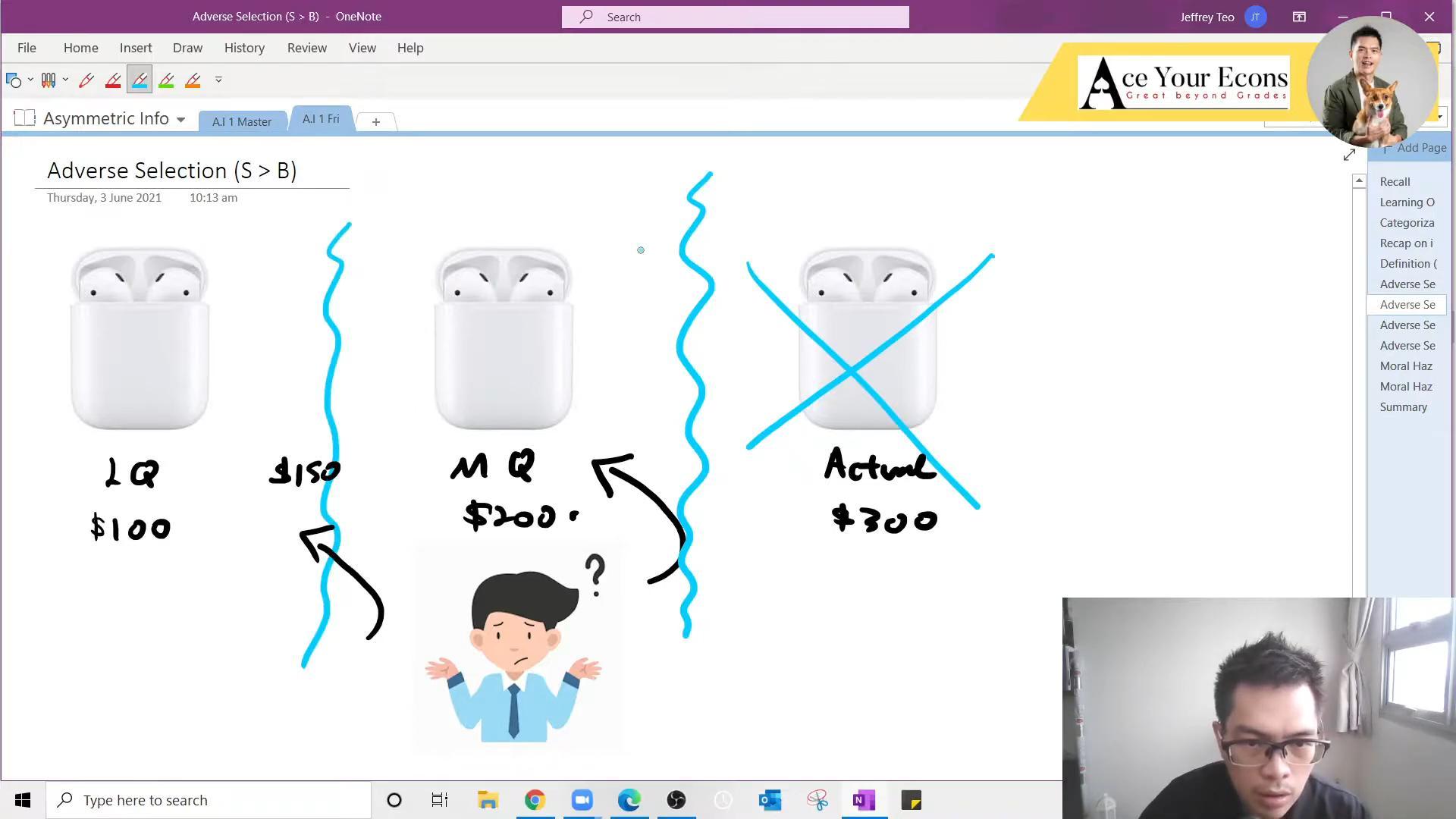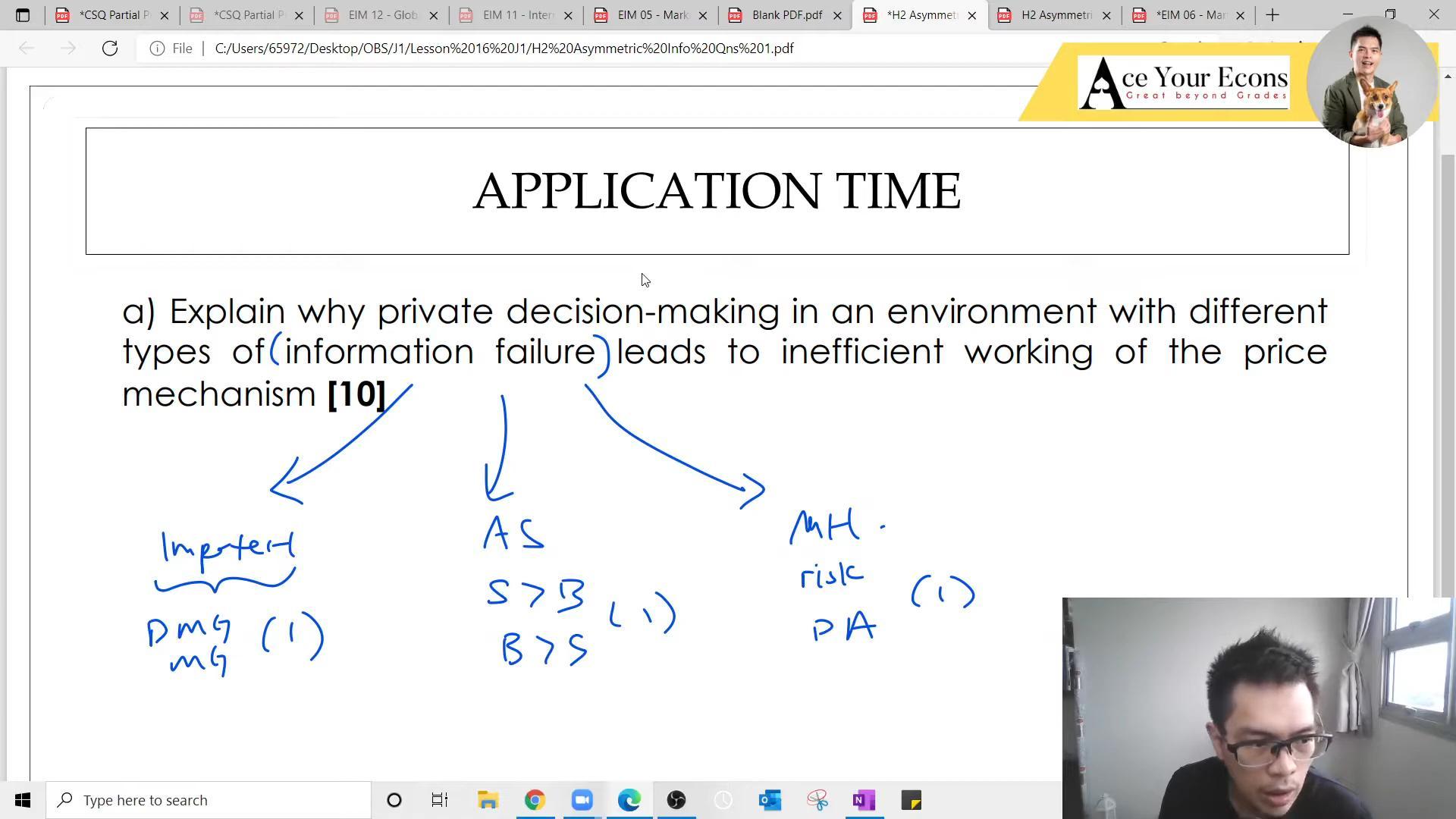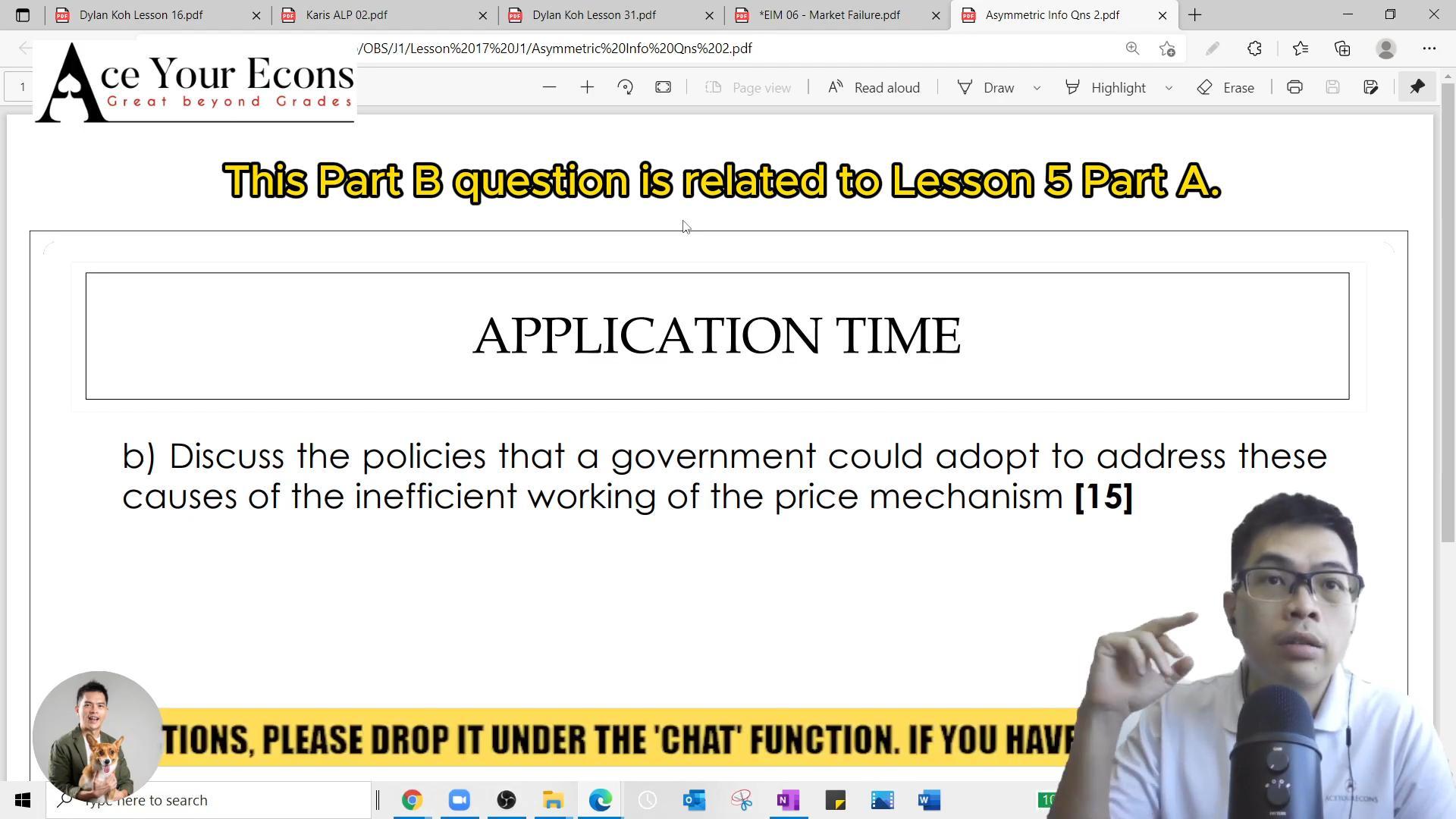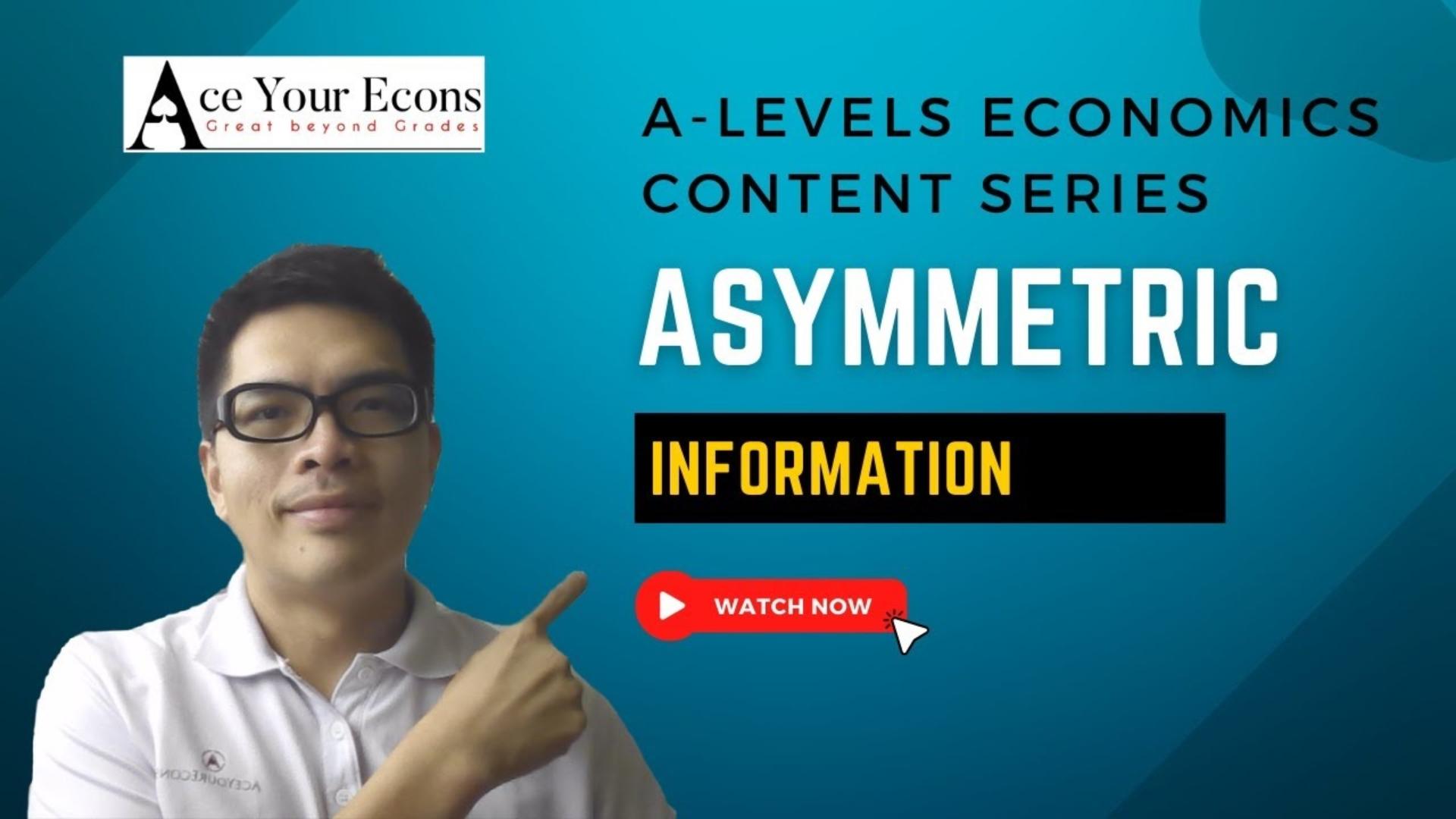
Bachelor of Arts in Economics (2nd upper)
A-Level Economics Content Series - Asymmetric Information (H2)
In this course, we will be going through asymmetric information. We will be distinguishing adverse selection and moral hazard with various examples with a sample practice question right at the end. Do note that principal agent problem & supply induced demand is only applicable for Victoria JC's students.
0 Assignments
Lesson 1 – Categorizing information failure
In this lesson, I will explain what is information failure. Basically, I will explain the 2 types of information failure.
Lesson 2 - Recap on imperfect information
In this lesson, I will recap the concepts of merit and demerit goods. I will discuss about 6 steps of framework to answer underestimation of true benefits or cost when consuming goods.
Lesson 3 - Adverse selection and examples
In this lesson, I will define Adverse selection and provide examples to illustrate adverse selection. Through the example, I will demonstrate the dynamics of adverse selection which could be a result from seller obtaining more information as well as from buyer. I will highlight the keywords to be used in answering questions related to adverse selection.
Lesson 4 - Moral hazard and examples
In this lesson, I will define Moral hazard and contrast it against Adverse selection. Through examples, I will demonstrate how moral hazard is displayed in day to day activities. I will explain the Principal-Agent (PA) problem.
Lesson 5 - Brief outline of selected question and Answer breakdown
In this lesson, we will discuss the following question “Explain why private decision-making in an environment with different types of information failure leads to inefficient working of the price mechanism.” This is Part A of a set of question. You may download the question here : https://bitly.ws/3eSsf. I will demonstrate the 4 steps to answering this question.
Lesson 6 – U.S.S.R. (Solutions for adverse selection)
In this lesson, I will introduce the acronym U.S.S.R. – Universal Coverage, Signaling, Screen and Regulation (aka Lemon Law), which is the solutions for adverse selection. I will use examples to show how the solution works.
Lesson 7 – Moral Hazard Solutions
In this lesson, I will discuss the 2 solutions for moral hazard – Co-Payment and Monitoring. I explain how co-payment and monitoring reduce moral hazard issue through examples.
Lesson 8 – Written Activity
In this last lesson, we will discuss the following question “Discuss the policies that a government could adopt to address these causes of the inefficient working of the price mechanism.” This is the Part B of the question from Lesson 5. You can download the question here : https://bitly.ws/3eT3R











Ask Ace your econs - Jeffrey Teo if you need help on this topic via